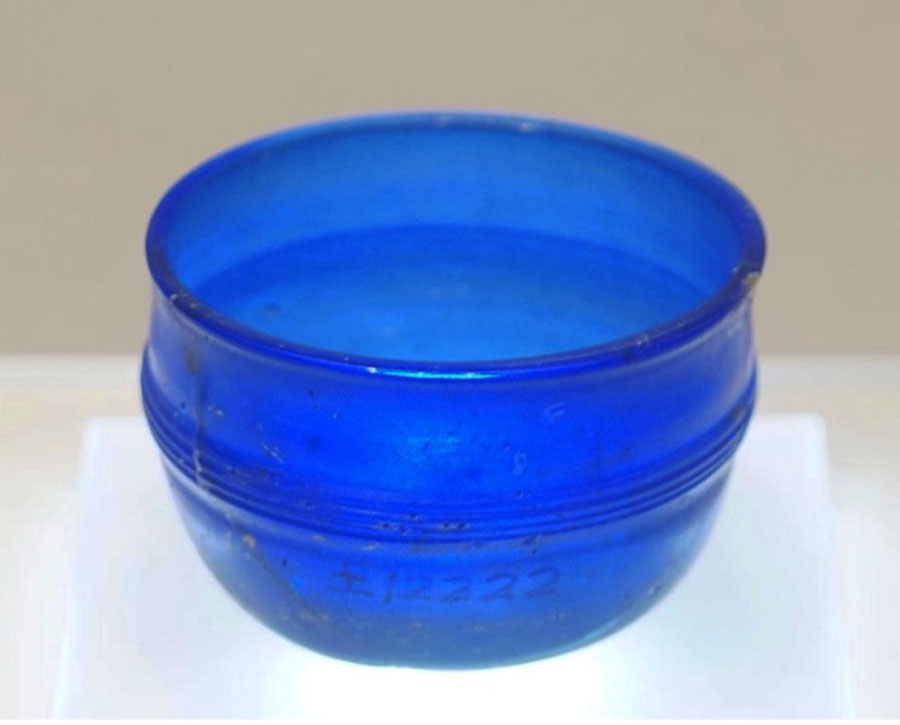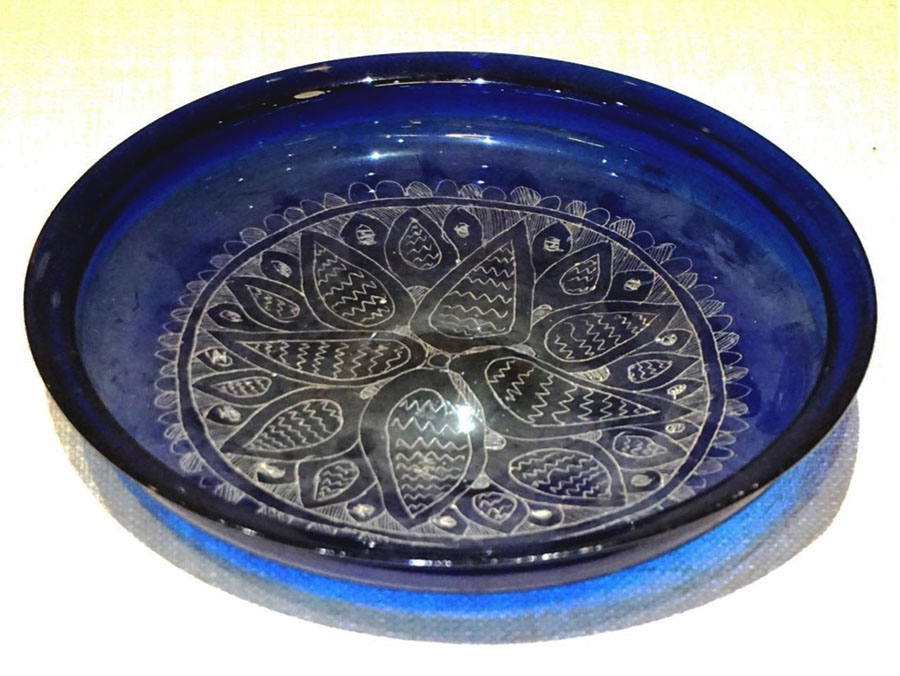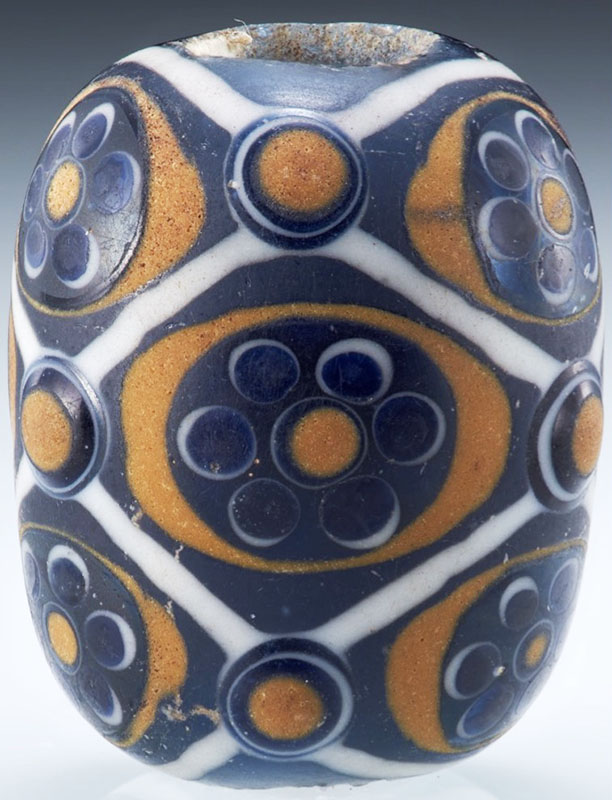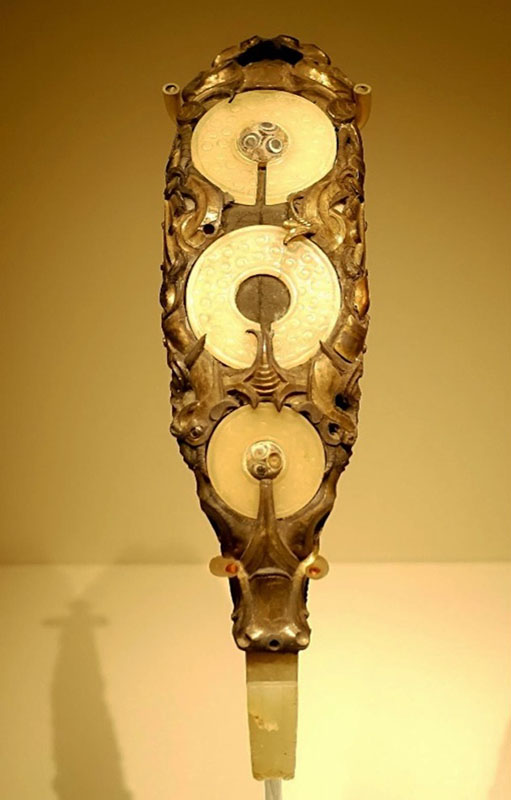Glass: Witness to 4000 Years of Cultural Exchange between West and East
Glass is one of the greatest ancient chemical inventions – known as the art of fire and sand – that is still closely related to our lives today. From faience (the predecessor of glass) to glass, this magical artificial silicate connects the current world with ancient China, having endured for 4000 years.
Exotic faience beads excavated from Adunqiaolu (阿敦乔鲁) and Xiaohe (小河) cemeteries in today's Xinjiang Uygur Autonomous Region show that, even 4000 years ago, whatever the chilliness and scorching heat of mountains and deserts, people could not be prevented from exploring the East. In the early Western Zhou Dynasty (1046-771 BCE), China achieved localized production of faience, which has been found at the Zhou Yuan (周原) site.
Glass-eye beads unearthed from the burial of Marquis Gushi (固始侯古堆), Henan Province, show that, no later than the end of the 6th century BCE, people on the eastern coast of the Mediterranean had established overland connections with the Central Plains of China. During the Western Han Dynasty (202 BCE-8 CE), South Asia was connected to southern China by the Maritime Silk Road, as is confirmed by a potassium glass cup with a string pattern unearthed from tomb No. 12 of Shendingling (深钉岭), Guigang (贵港), Guangxi (广西) Province [Fig. 1]. As recorded in historical literature, emperors’ messengers of the Han Dynasty (202 BCE-220 CE) had travelled by sea to the Huangzhi kingdom (黄支国) in South Asia for pearls, gemstones and other exotic treasures. What they brought back may be including glasswares from the West. The ribbed glass bowl unearthed from the tomb of Prince Liu Jing (刘荆) of the Eastern Han Dynasty (25-220 CE)in Ganquan Zhuang (甘泉庄), Yangzhou (扬州), Jiangsu Province, obviously from a glass workshop in Italy, bears witness to cultural exchanges between the Roman Empire and the Han Dynasty in the 1st century CE.

Fig. 1: Glass cup from Shendingling. (Photo by Yi Feng, 2022)
The Biography of the Western Regions of Weishu (魏书·西域传, Weishu·Xiyuzhuan ) is the first historical literature to record that Central Asian craftsmen introduced Western glass-making technology to China in the 5th century CE. The faceted glass bowl found in the tomb of Li Xian (李贤) of the Northern Zhou Dynasty (557-581 CE) in Guyuan (固原) is important evidence of the ties between the Sassanian dynasty and China in the 6th century CE [Fig. 2]. The Islamic glassware, unearthed from the underground palace of the Famen Temple in Fufeng (扶风法门寺地宫), Shaanxi Province, are contemporary masterpieces and witnesses to the prosperity of the trade between West Asia and the Tang Dynasty in the 9th century CE[Fig. 3]. Nobles of the Liao Dynasty preferred glassware from West Asia in the 11th century CE, as shown by beautiful Islamic glass vessels unearthed from the tomb of the Princess of the Chen kingdom (陈国公主墓) in Tongliao (通辽). The Islamic enameled and gold-painted glass vessels of the Mamluk Dynasty found in China may have been imported into the Yuan Dynasty by sea from Egypt or Syria in the 14th century CE. 1

Fig. 3: Glass plate from underground palace of Famen Temple. (Photo by Chunlei Qin, 2019)
After receiving glass objects imported from the West, China gradually formed types of glass with local characteristics, such as lead-barium oxide glasses from the Warring States period (475-221 BCE) to the Han Dynasty, and lead-silica glasses from the Sui (581-618 CE) to Northern Song (960-1127 CE) Dynasties. While absorbing elements of foreign styles of glass, ancient Chinese craftsmen created native art and new functions with Oriental aesthetic taste in glass-making, such as the stratified compound glass eye beads of the Warring States [Fig. 4] and glass bi (璧), a round ritual object usually made of jade for worship or entombment. Such craftsmen created fantastic gilt bronze items like belt hooks [Fig. 5] or mirrors inlaid with jade and glass, and they blew gourd-shaped glass bottles used to hold Buddhist relics.

Fig. 4: Stratified compound glass eye bead of the Warring States Period from Mashan site of Jiangling. (Photo by Chao Ren, 2022)

Fig. 5: Gilted bronze belt hook inlayed with jade and glass of the Warring States period. (Photo by Chunlei Qin, 2017)
At the beginning of 2022, the Art Museum of Tsinghua University held a special exhibition entitled "Marvelous Colors, Manifold Forms: Culture Exchanges in Glass Art among the Ancient East and West." For the first time, ancient glass objects from archaeological sites in China were brought together with ancient glass artifacts from other parts of the world to form a time corridor spanning nearly 5000 years. The exhibition took glass as the media for displaying a history of ancient civilizations, including the development of science and technology as well as exchanges in art and trade. It gave ordinary audiences fresh visual experiences and provided scholars with new perspectives on glass. This could be seen as one of China’s responses to the United Nations’ initiative to designate 2022 as the International Year of Glass. 2
Chunlei Qin is an independent researcher and curator of the exhibition on "Marvelous Colors, Manifold Forms: Culture Exchanges in Glass Art among the Ancient East and West" in the Art Museum of Tsinghua University. Email: chunleiqin@hotmail.com